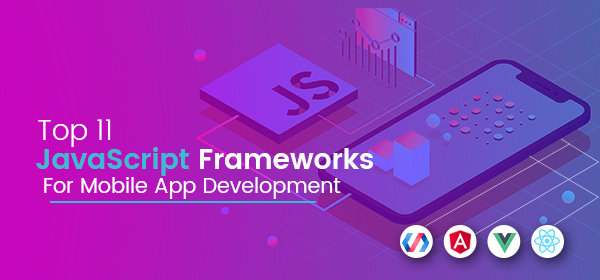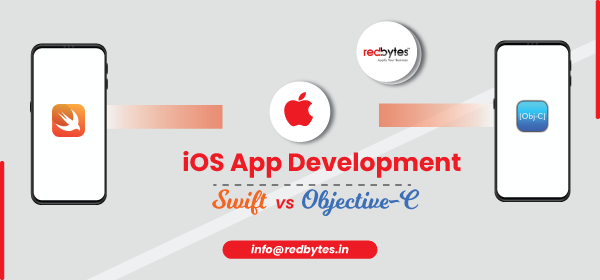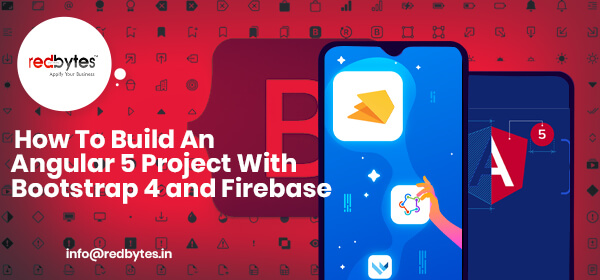The mobile application development has seen such a great paradigm shift that we have a user interface that is optimized for fingers and not for mouse cursors, not anymore.
In addition to that, there are bandwidth restrictions that most of the smart devices have and that is why mobile app developers ought to stay ahead in this challenging world and come up with some of the finest solutions in the form of excellent functional mobile applications.
Mobile platforms such as Android, Windows, and iOS use different programming languages. For example, an Android mobile apps is coded using Java language, the iOS mobile application is coded using Objective-C, and a Windows mobile application is coded using .NET.
Just like on web application, does JavaScript have a similar effect on mobile application development as well? Nevertheless, with sound knowledge of JavaScript, CSS, and HTML, mobile application developers can develop some of the best apps. Today, in this post we will discuss some of the best JavaScript frameworks for mobile apps development.
1. jQuery Mobile
With too many smartphones available in the market, it is essential to take care while developing a mobile application that not only can load faster but also customized and functional across various platforms.
When compared to other frameworks, jQuery Mobile comes number one in the list when you have to develop an app that loads faster.
- Create cross-platform applications faster.
- Cost-affordable hybrid mobile app development.
- HTML5 and CSS3 for a better touch-optimized UI.
- Lightweight Framework for faster loading.
- Ajax-powered navigation with animated page transitions.
- Uniform user interface for all platforms and devices.
2. PhoneGap
Otherwise known as Apache Cordova, PhoneGap is a widely utilized framework, especially for cross-platform mobile application development.
It is highly recommended for projects that have budget issues. just by utilising a single codebase, multiple versions of the application can be created by PhoneGap.
- Single code base for multiple platforms (iOS, Android, and Windows).
- Simple rapid testing and deployment of the application.
- Tapping into device’s hardware such as camera and geolocation will be easy.
- No need for additional knowledge of development.
- Needs less time and efforts.
3. Mobile Angular UI
An HTML5 framework, Mobile Angular UI utilizes Bootstrap 3 and AngularJS to develop highly interactive mobile applications.
If you are a huge fan of angular, then this is the right Framework for you. not only does it provide important mobile components such as overlays, sidebars, and switches But also developers can bring the website two smartphones in the form of an application.
- Faster and simpler data binding.
- Modifications will be instantly displayed in the model
- Minimizes burden from server CPUs by supporting caching and other processes.
- Faster application prototyping.
4. Sencha Touch
By adding a variety of features, Sencha Touch lets customization exactly how users will interact with the application as per their wish.
Sencha Touch is one of the popular HTML based frameworks that Is used to create applications that work amazingly on all platforms without having to change the code for every operating system.
- Provides a high-level responsiveness for applications.
- It is compatible with all the latest versions of Android, iOS, and BlackBerry.
- Loads the application as fast as possible.
- Creating a native application would be easy.
5. Titanium
One of the old frameworks for hybrid mobile application development, Titanium Provides a simple and transparent access to most of the native functionalities.
Using web technologies like JavaScript and CSS, developers can seamlessly develop native applications along with hybrid and web apps.
- Can easily develop applications compatible with Android, iOS, etc.
- Functional entities let you create high-performance applications.
- Build quick prototypes as it comes with an integrated environment.
- Extremely cost-affordable open-source option
- Simplified coding structure as it supports powerful web technologies.
6. Meteor
A free and open-source platform, Meteor is utilized for building modern mobile apps. Not only does this JavaScript framework let rapid prototyping and gives cross-platform code but also gives you the control over your application.
- Lets you update JavaScript code without any development skills.
- Gives mobile to server data communication and synchronization functions.
- Known for Speed and quick deployment.
- Eliminates bugs that most of the new applications seem to have.
- Offers great flexibility across platforms and devices.
- External libraries and several plugins can be utilized.
7. Ionic
Ionic is a commonly used open-source framework to build hybrid mobile applications. This framework provides useful tools and services which developers can utilize for creating native and progressive web application seamlessly. With Ionic, developers need fewer efforts and also can minimize maintenance expenses.
- Code works across platforms and devices.
- Single programming language for all operating systems.
- Variety of Cordova plugins available.
- Utilization of well-known web technologies.
- Application testing is easier.
Read also : Java vs Kotlin: What is Better For Android App Development?
8. React Native
If you are a big fan of native mobile apps then obviously one of the few options you will be left with is React Native. As it is an Open source framework, react native app developers in reprocessing the same code on the web and mobile.
- Developers can seamlessly copy half the code to build apps on other platforms.
- With native components, users can get native app experience.
- Revamping complete code is not required.
- Developers can easily run the code everywhere by putting fewer efforts.
9. NativeScript
A creative hybrid application development framework, NativeScript is extremely useful in building native cross-platform applications with super performance.
In addition, NativeScript allows developers to reutilize skills from Angular, JavaScript, and TypeScript. Its holistic approach lets developers write once and run it everywhere.
- Single code base and then develop it for Android or iOS.
- Gives faster access to native libraries.
- Team Native Script welcomes feature requests to enhance.
- Developers can learn Native Script using JavaScript, XMS, and CSS.
10. Backbone JS
An old JavaScript mobile app framework, Backbone JS is highly lightweight and capable of handling current requests. It is extremely helpful when developing the one-page application.
Also, the developer can effortlessly keep an application logistics separated from user interface so that both can be easily modified and updated whenever needed.
- Due to its lightweight, downloading speed would be faster
- Framework includes loads and loads of small libraries which are suitable for specialized needs.
- The models in Backbone JS can be simply tied to the back-end.
Read also : How much does it Cost to Create an App like Instagram?
11. Ember JS
Designed to develop complex hybrid mobile applications, Ember JS lets developers utilize future JavaScript standards and transpile them for utilization in browsers for later use. It is an excellent option for all the writing web applications.
- Two-way binding method makes it easy
- High-performance applications
- It has its own debugging tool
- Faster development with Ember CLI
Closing Thoughts:
Other than the above-mentioned frameworks, the mobile application development market is flooded with hundred other creative JavaScript frameworks and choosing the right JavaScript framework should be never about the number of innovative features it can provide.
Instead, it should be about the real functionalities of the framework and how those can be applied within the application. Now, all the best with your final choice.




![Top 10 Mobile Game Development Tools Preferred by Developers [Infographic]](https://wp.redbytes.in/wp-content/uploads/2018/05/feature-image-Top-10-Mobile-Game-Development-Tools-Preferred-by-Developers.jpg)









